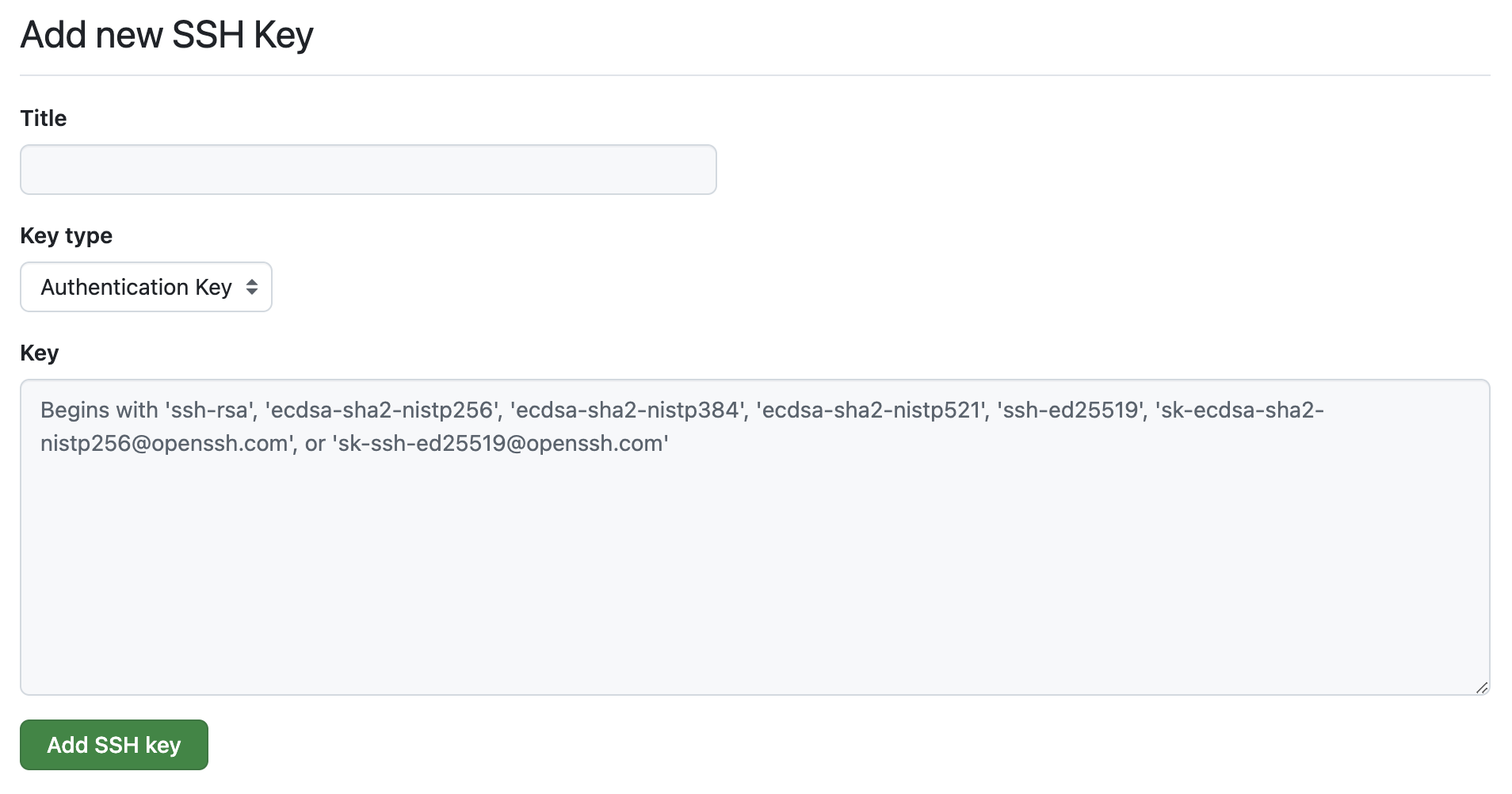Setting up multiple GitHub accounts on one computer
Configuring multiple GitHub accounts with SSH connections

Due to my remote work setup, I needed to configure a company GitHub account on my personal computer.
However, GitHub doesn’t allow the same SSH key to be used across multiple accounts, which means I can’t assign my personal SSH key to the company’s GitHub account.
Goal: Set up two SSH keys on one computer, and automatically use the correct one when executing Git commands.
[For reference]: Generating a new SSH key and adding it to the ssh-agent
1. Generate a New SSH Key
ssh-keygen -t rsa -C '{[email protected]}' -f ~/.ssh/id_rsa_company
The SSH key will be saved to:
- Mac:
/Users/username/.ssh - Windows
C:\Users\username\.ssh
Next, copy the contents of the generated id_rsa.pub.
2. Add the SSH Key to Your Company GitHub Account
Navigate to the SSH keys management page
in your company account and click New SSH key.

Give it a name you can easily recognize and paste the id_rsa.pub content you copied earlier.
3. SSH Config Setup
3-1. Clear All SSH Keys
This command will clear the configuration, but it won’t delete the SSH key files.
ssh-add -D
After several attempts, my keys got pretty messy, so I decided to clear everything before proceeding.
Adding keys back is simple and will be part of the next steps.
3.2. Check Existing SSH Keys
ls .ssh
3.3. Re-add the SSH Keys
We previously generated a new SSH key, id_rsa_company, while the personal key is called id_rsa.
ssh-add ~/.ssh/id_rsa
ssh-add ~/.ssh/id_rsa_company
You can verify they were added successfully:
ssh-add -l
3.4. Modify SSH Config
First, ensure the ~/.ssh/config file exists. If not, create it.
cd ~/.ssh/
touch config
open config
Then, edit the file to look like this:
# Personal GitHub account
Host github.com
HostName github.com
AddKeysToAgent yes
UseKeychain yes
IdentityFile ~/.ssh/id_rsa
IdentitiesOnly yes
# Work GitHub account
Host github.com-company
HostName github.com
AddKeysToAgent yes
UseKeychain yes
IdentityFile ~/.ssh/id_rsa_company
IdentitiesOnly yes
Here, we’ve set up two SSH keys: one for the personal account and one for the company account.
- Host: refers to the server (either an IP or domain).
- IdentityFile: points to the SSH key file.
- AddKeysToAgent: indicates whether the key should be added to the
ssh-agent. - UseKeychain: specific to macOS and allows the key to be stored in the keychain.
4. Test the Connection
ssh -T [email protected]
ssh -T [email protected]
If successful, you should see welcome messages from the respective accounts.

5. Clone a Repository
For your personal account, no changes are needed.
However, for company projects, replace the default github.com with github.com-company in the clone command.
git clone [email protected]:{company/repository.git}
In this example, we’ve replaced github.com with github.com-company so that Git automatically uses the correct SSH key.
Some Git GUI tools might not support multiple SSH keys and could give errors, even attempting to use the wrong key (e.g., connecting to the company account when you meant to use your personal one).
If this happens, you might need to clear all SSH keys again.
A more reliable approach is to continue using your favorite GUI for local Git operations, like commit or viewing branches, but run remote commands (e.g., push, pull) directly in the terminal.
6. Adjust Existing Projects
For existing projects, open the /.git/config file in your project folder, and update the URL under
[remote "origin"] to point to the company account’s URL.
[remote "origin"]
url = [email protected]:company/repository.git
fetch = +refs/heads/*:refs/remotes/origin/*
If your GUI tool allows editing the remote URL, that’s even easier.
That’s it for this guide! I hadn’t faced this issue for a while since I was using a company-issued computer for development.
Although I had done this setup before, I didn’t document it, thinking it wouldn’t come up often.
However, rare problems like this are exactly why we should document them—to avoid spending extra time figuring it out again!





